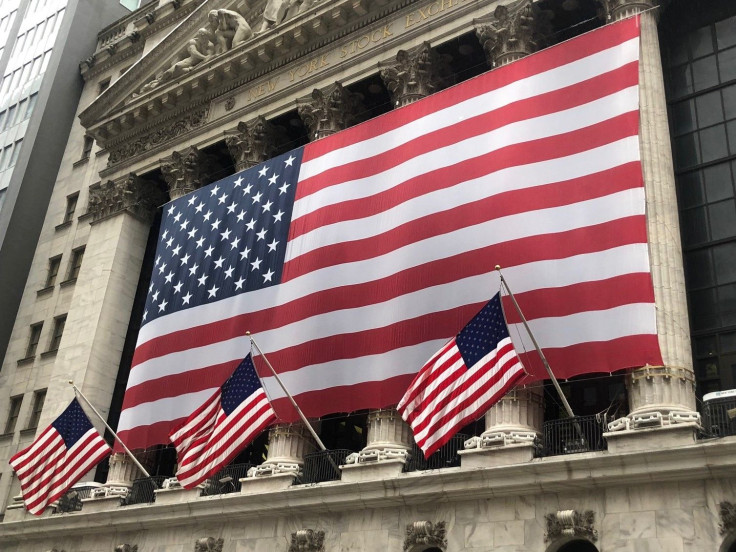Wednesday's Stock Market Close: US Equities Plunge, Second Quarter Begins On The Wrong Foot

KEY POINTS
- The White House warned of up to 240,000 deaths from coronavirus
- There were more than 874,000 coronavirus cases around the world, with over 189,000 in the U.S.
- US Treasury yields plunged
U.S. stocks plummeted on Wednesday after the White House warned the country could see hundreds of thousands of deaths from coronavirus.
The Dow Jones Industrial Average dropped 973.65 points to 20,943.51, while the S&P 500 fell 114.09 points to 2,470.50 and the Nasdaq Composite Index tumbled 339.52 points to 7,360.58.
Volume on the New York Stock Exchange totaled 5.04 billion shares with 198 issues advancing, three setting a new high, and 2,809 declining, with 113 setting new lows.
Active movers were led by Carnival Corp. (CCL), Ford Motor (F) and Amarin Corp. PLC (AMRN).
Johns Hopkins University said there were more than 874,000 coronavirus cases around the world, with over 189,000 in the U.S
On Tuesday night President Donald Trump said the U.S. should brace for a “very, very painful two weeks” from coronavirus. “This is going to be a rough two-week period,” he said. “When you look at night the kind of death that has been caused by this invisible enemy, it’s incredible.”
White House officials are anticipating up to 240,000 virus-related deaths in the U.S.
New York Gov. Andrew Cuomo said Wednesday he is closing all New York City playgrounds.
“There’s still tremendous uncertainty,” said Patrick Kaser, portfolio manager at Brandywine Global. “We can look at history as a guidepost for the market and the economy, but there’s not a perfect scenario. In situations like this, the best thing for long-term investors is to figure out what they want longer term.”
After a historically disastrous first quarter and March, DoubleLine Capital CEO Jeffrey Gundlach said things will likely worsen in April.
“The low we hit in the middle of March … I would bet that low will get taken out,” he said. “The market has really made it back to a resistance zone. ... Take out the low of March and then we’ll get a more enduring low.”
The Dow plunged 23.2% in the first quarter, while the S&P 500 dropped 20%.
“The [first] quarter will be remembered as the fastest and greatest drop in the stock market for the start of any post-war bear market,” said Jim Paulsen, chief investment strategist at the Leuthold Group. “This reflects the fact that this bear is the only one cause by a recession which was simply ‘proclaimed’ as leaders announced they were essential shutting down the economy. Since a recession was ensured, the bear skipped all its normal foreplay and simply went right to the end fully reflecting a recession almost immediately.”
Private companies in the U.S. reduced payrolls by 27,000 in early March through Mar. 12, according to a report Wednesday from ADP and Moody’s Analytics. But this figure predated the massive impact of virus-related job losses.
The Commerce Department said spending on U.S. construction projects fell by 1.3% in February with both housing and nonresidential construction showing weakness even before the coronavirus pandemic hit.
ISM manufacturing index fell to 49.1 in March from 50.1 in February, indicating a shrinkage in U.S. manufacturing activity during the pandemic.
“The news flow that we’ve gotten has been pretty extreme,” said Megan Horneman, director of portfolio strategy at Verdence Capital Advisors. “You combine that with the fact that the [economic] data coming in has been dreadful ... it’s a lot for investors to absorb at this point.”
Horneman added however that the market will “navigate to finding a bottom” as fiscal stimulus packages take effect. “But calling a bottom isn’t possible,” she added.
Overnight in Asia, markets were lower. China’s Shanghai Composite slipped 0.57%, while Hong Kong’s Hang Seng fell 2.19%, and Japan’s Nikkei-225 dropped 4.5%.
In Europe markets finished broadly lower, as Britain’s FTSE-100 dropped 3.83%, France’s CAC-40 tumbled 3.94% and Germany’s DAX fell 4.3%.
Crude oil futures rose 1.86% at $20.86 per barrel, Brent crude gained 0.89% at $24.96. Gold futures edged up 0.34%.
The euro slipped 0.68% at $1.0958 while the pound sterling edged down 0.11% at $1.2398.
The yield on the 10-year Treasury plunged 9.03% to 0.635% while yield on the 30-year Treasury dropped 4.59% to 1.289%.
© Copyright IBTimes 2025. All rights reserved.





















